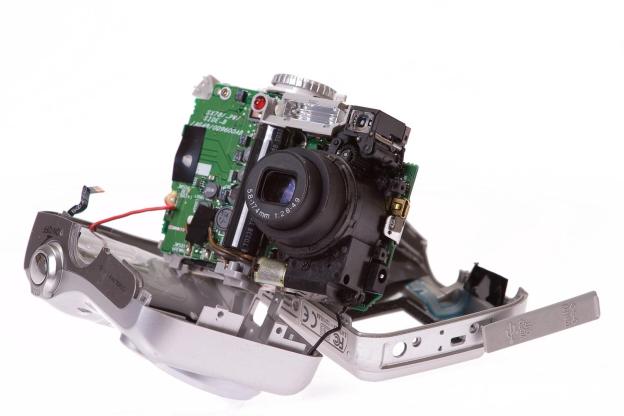
For casual photography it’s no secret that smartphones are gaining popularity over entry-level point-and-shoot cameras among users. Smartphones will eventually dominate this sector, and it’s a simple of question of when – not if – that will happen. But if some recent news from big camera companies is any indication, the basic cheap point-and-shoot camera may soon be a thing of the past.
Last month, Olympus announced that it’s scrapping its V series and exiting the low-end, compact point-and-shoot sector. The V series consists of budget models costing less than $200. Joining Olympus in that sentiment is Fujifilm, which recently announced that it will cut down its product of compact cameras by 50 percent and low-end models will be eliminated completely.
Olympus’ camera business reported a loss last year through March due to weaker-than-expected demand for compact cameras, according to the Wall Street Journal. Like Fujifilm, Olympus will sell fewer cameras this year – 2.7 million versus 5.1 million during the last year. Besides its camera business being impacted by smartphones and shifts in consumers’ camera buying trends, Olympus has had to deal with a strong currency back home in Japan that has affected exports (an issue that all Japanese manufacturers had to grapple with, although the yen has started to weaken) and a corporate scandal that’s rocked management. The company is also shedding jobs as it reshapes its imaging business. With all these issues combined, plus its smaller hold of the overall camera market share, it’s not a surprising move on Olympus’ part.
According to an interview Fujifilm’s general manager of the Optical Device and Electronic Imaging Products Division, Hiroshi Tanaka, gave to the Nikkei newspaper (via Amateur Photographer), the company will eliminate cameras with low profit margins and plans to merge its digital camera operations with its optical devices business, which could reduce procurement costs by 10 percent. As an option, Fujifilm is also considering manufacturing cameras in the Philippines – where it already has operations – as a way to keep costs down, although high-end models in the X-series would still be made in Japan. The company is aiming to return its camera division back into the black by March 31, 2014.
Canon: Low-end compact cameras that don’t have obvious features that stand out will be eventually wiped out of the market.
It’s not completely bad news for the camera companies. There are growth opportunities in the high-end point-and-shoot and interchangeable lens camera sectors – in particular the compact mirrorless market, which Olympus has a strong foothold in with its Micro Four Thirds models. Last year, Sony announced it’d invest $644 million in Olympus, making Sony the largest shareholder. (Rumor has it that Sony is implementing Olympus’ 5-Axis image stabilization technology into its A-mount cameras.) Olympus is also a major manufacturer of medical equipment.
As for Fufijim, the company is seeing higher profit margins from its well-received X-series high-end cams. “Although we enjoy the compact market, it’s fantastic for Fuji to get back to ‘real’ photography,” Fujifilm Europe Senior Vice President Adrian Clarke told Amateur Photographer.
In its 2012 annual report, Sony highlighted digital imaging as a core area of the company where it “will further strengthen the development of proprietary technology in image sensors, signal processing technology, lenses, and other fields in which it excels. Sony believes that it can maintain its high market share in the digital camera and digital video camera markets and generate stable profits in these categories.”
From smartphones to tablets – to even the most basic camera-equipped cell phone – consumers now have more options when it comes to photography. Camera makers did not take phones as a threat, citing their cameras’ lower quality. That may have been true, but technology quickly improved, with many of the latest smartphones now rivaling entry-level point-and-shoot cameras in image quality. Add cellular/wireless connectivity and apps like Instagram and Vine, consumers are also having more fun using their phones to shoot every-day photos than with a standalone camera. The camera makers will still dominate in the higher-end of the photography spectrum, or as Fujifilm Europe’s Clarke calls it, “real” photography. But, as Olympus and Fujifilm have shown, the low-end is not a place where the manufacturers can play in and still churn out a profit.
Editors' Recommendations
- Best camera deals: Save on DSLR, action cameras, point-and-shoot
- The Fujifilm X100V is loaded with tech it doesn’t need — and that makes it great
- With the RX100 VII, Sony took the best point-and-shoot and made it better


